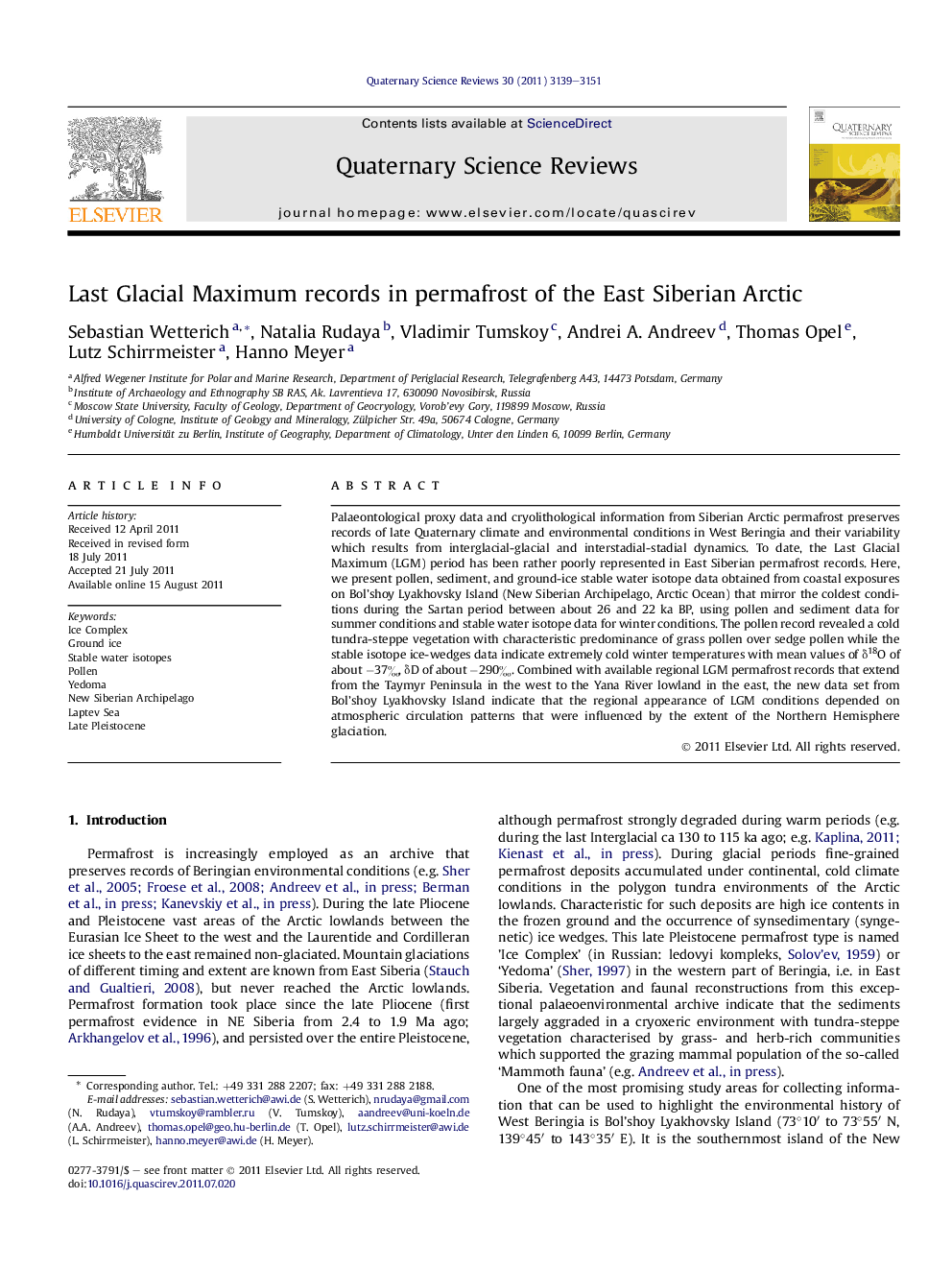| Article ID | Journal | Published Year | Pages | File Type |
|---|---|---|---|---|
| 4736644 | Quaternary Science Reviews | 2011 | 13 Pages |
Palaeontological proxy data and cryolithological information from Siberian Arctic permafrost preserves records of late Quaternary climate and environmental conditions in West Beringia and their variability which results from interglacial-glacial and interstadial-stadial dynamics. To date, the Last Glacial Maximum (LGM) period has been rather poorly represented in East Siberian permafrost records. Here, we present pollen, sediment, and ground-ice stable water isotope data obtained from coastal exposures on Bol’shoy Lyakhovsky Island (New Siberian Archipelago, Arctic Ocean) that mirror the coldest conditions during the Sartan period between about 26 and 22 ka BP, using pollen and sediment data for summer conditions and stable water isotope data for winter conditions. The pollen record revealed a cold tundra-steppe vegetation with characteristic predominance of grass pollen over sedge pollen while the stable isotope ice-wedges data indicate extremely cold winter temperatures with mean values of δ18O of about −37‰, δD of about −290‰. Combined with available regional LGM permafrost records that extend from the Taymyr Peninsula in the west to the Yana River lowland in the east, the new data set from Bol’shoy Lyakhovsky Island indicate that the regional appearance of LGM conditions depended on atmospheric circulation patterns that were influenced by the extent of the Northern Hemisphere glaciation.
► East Siberian permafrost mirrors LGM conditions in West Beringia. ► Combined pollen and ground-ice (δ18O, δD) data reveal seasonal LGM conditions. ► Driest and coldest conditions occurred from 24 to 18 ka BP. ► Spatial appearance of LGM conditions depended on atmospheric circulation patterns.
